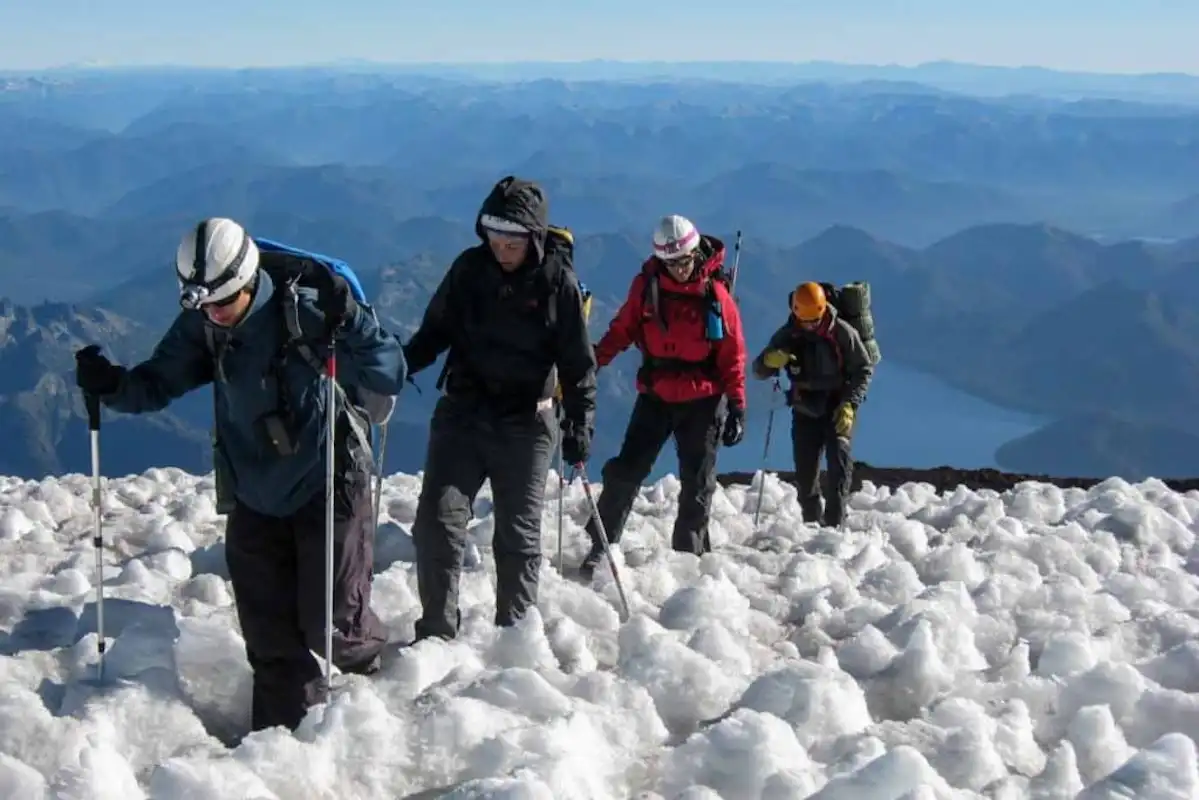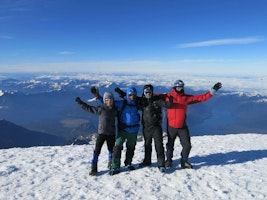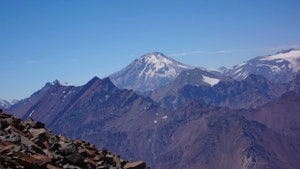Rising 3776 m in the Andes Mountains, on the Argentine / Chilean border, Lanin Volcano is one of the most iconic mountains in North Patagonia.
With its conical shape and glaciated summit, its majestic figure easily stands out from the lesser-high surrounding mountains and can be spotted far in the distance. Beyond its alluring beauty ―or precisely for that reason― Lanin Volcano is also one of the symbols of the province of Neuquén (in Argentina) and a sacred mountain for the Mapuche people.
From the Argentinian side, the volcano lies within Lanin National Park, while the Chilean side is part of Villarrica National Park. This region is a humid forest, studded with Araucaria trees (or Monkey-Puzzle) and Lengas, and surrounded by several lakes like Tromen, Huechulafquen and Paimún.
Even though you can approach the peak from both countries, the ascent via the normal route (in Argentina) is by far the most popular.
Climbing Lanin Volcano is a physically demanding undertaking, so you need to be in very good shape. However, it doesn’t entail much technical difficulties, so it’s a huge favorite in the Andes for those getting started in mountaineering.
Check out all of our 5 recommended peaks for beginners in the Andes Mountains, Lanin included!
Planning to conquer the summit of this mythical Andean volcano? Going with a certified mountain guide is the best way of enjoying a lifetime adventure. See all the guided trips to Lanin at Explore-Share and keep reading to find out everything you need to know about this ascent!
Starting points
The most common starting points to Lanin National Park in Argentina are the cities of Junín de los Andes ―a small town at only 65 km from the park― and San Martín de los Andes, a more touristy and very scenic city in Argentina's Lake District, 100 km distant from Lanin volcano.
From the Chilean side, the best jumping-off point is Pucón, an outdoor hub in the region of Los Lagos, dominated by another stunning volcano: Villarrica.
Whatever your choice is, you'll find a wide range of accommodation options for all budgets.
How to get there
San Martín de los Andes / Junín de los Andes: From Buenos Aires, there are daily flights to Chapelco Airport (2h), located half-way between both cities. Bariloche is at a 3h drive (depending on the route) from San Martín de los Andes. If you are up for an scenic drive, take the Route of the Seven Lakes (not entirely paved). If you are in Chile, a bus drive from Pucón can leave you in San Martín de los Andes in 3h 45m.
Pucón: There are flights from Santiago to Pucón only a few days a week during the summer months. The most convenient option to reach the city by air is flying to Temuco airport. There's only 1h drive from Temuco to Pucón. A bus drive from Santiago to Pucón takes 11 hours and it's usually an overnight travel.
Climbing routes
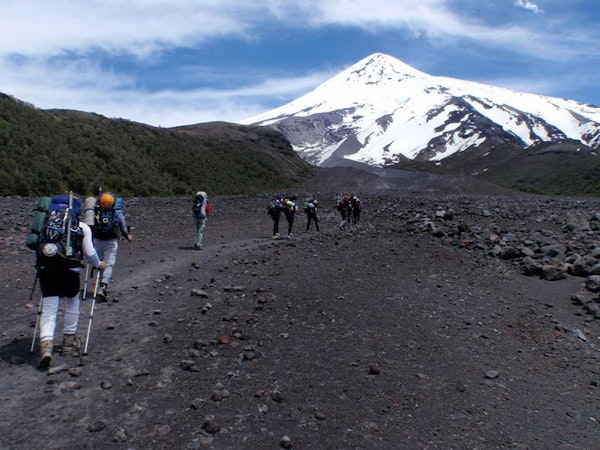
There are two climbing routes to the summit of Lanin Volcano:
The normal route goes via the north face of the mountain and provides a relatively easy ascent on volcanic rock and snow. This route is suitable for beginners with little mountaineering experience (the use of crampons and ice axe is required for the last part of the ascent).
The south face route is much more challenging and demanding, as it concentrates all the glaciers in the mountain. This route is only recommended for climbers with seasoned skills in rock climbing and ice climbing.
Duration of the ascent & itinerary
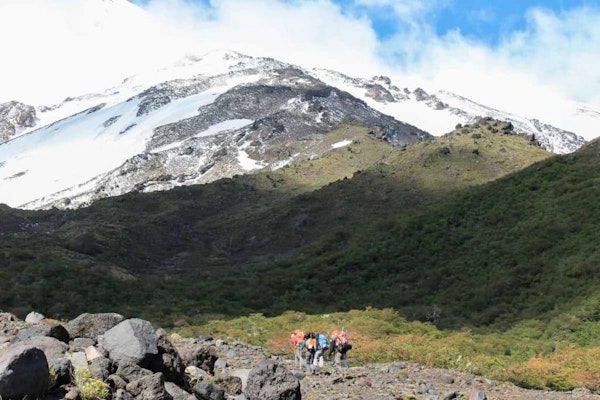
Climbing Lanin Volcano typically takes 2 days. Here’s a 2-day program that allows to join a group in lots of different dates! In case Lanin is your very first mountain experience, you can consider a 4-day itinerary including a previous training of basic mountaineering skills.
The normal route starts at the ranger station. A marked trail through a nice Lenga forest will lead you to the base of the mountain. Then, you’ll go through different sections known as the ‘fish bone’ and the ‘mule track’, and finally reach the mountain huts area (2400 m). This first day you’ll hike for 4-6 hours.
At the hut, you’ll have time to relax, have an early dinner and get some rest before the summit attack. Depending on the experience of the group, the guide will also take some time to explain the basics of using crampons and ice axes.
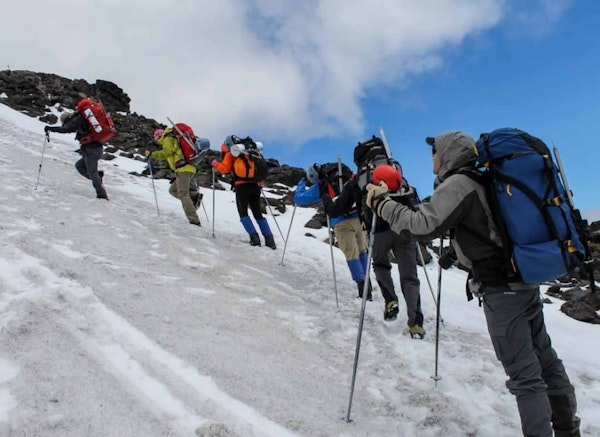
The second (and last) day starts around 2 or 3 AM. The first part of the ascent is usually on a rocky surface, but then you’ll need to use crampons to walk on a snow-covered terrain. Expect a 7-10 hour approach to the summit, with a 1400m altitude gain. You’ll get to enjoy an amazing sunrise along the way! After enjoying a fascinating view from the top of Lanin ―which includes many Chilean volcanoes like Villarrica, Puyehue, Llaima and Osorno― you’ll start a demanding descend of about 5 hours.
Mountain huts
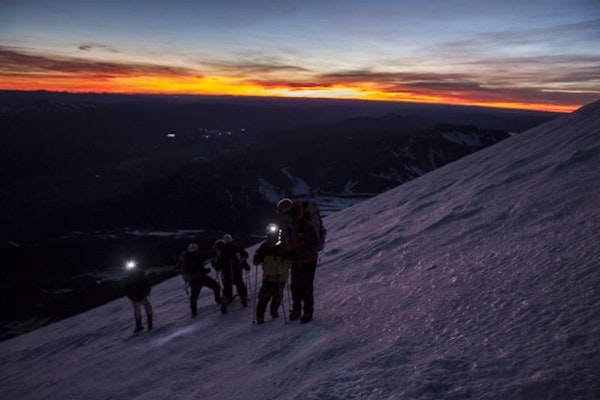
There are three mountain huts in Lanin Volcano. The first one, located at 2400 m, is a military mountain hut (RIM). Usually, this hut is only used in cases of heavy snowfalls or storms.
A little bit higher, you’ll find the most popular mountain huts: BIM and CAJA. The last one belongs to Junín de los Andes mountain club and it’s located at 2700 m, though it can only accommodate 10 people. Camping is also allowed in the area.
When registering your ascent, the National Park authorities will assign you a hut to stay for the night. In case there are no places available, you will have to camp.
Permits, physical requirements and technical difficulties
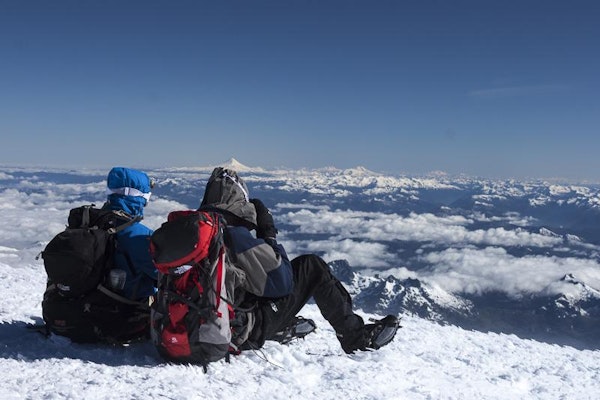
It is mandatory to register your ascent to Lanin Volcano. There’s a daily maximum of 60 people allowed to be in the mountain, including those staying at mountain huts and tents. According to the rules of Lanin National Park, people can only spend one night at any of the mountain huts.
You need to be in perfect physical conditions for this ascent. Doing some training the months before the climb is highly recommended. Keep in mind that the whole ascent involves a 3,000m total altitude gain carrying weight on your back and the second day demands 12-15 hours of trekking. There are no major technical difficulties, though you’ll need to walk on a snowy terrain on the final approach to the summit and overcome the unstable and rough Patagonian weather.
Unless you are a seasoned mountaineer, you will need to climb Lanin in the company of a certified mountain guide authorized by the National Park. Except for the first section, the trail is not marked. A guide will assist you throughout the trip with orientation, equipment, logistics and safety matters. Besides, he/she will assess the weather conditions and carry a radio to be in contact with the ranger station.
When is the best time to climb Lanin Volcano?
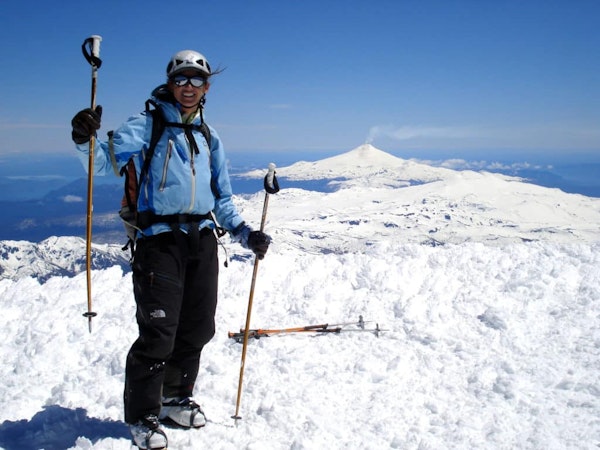
The climbing season for Lanin Volcano goes from October to May.
Between October-December (Spring months), the days are short, there are less hours of daylight and temperatures are colder. There’s also a big amount of snow, so the ascent can also be done on skis, especially in October. If you are up for an intense mountain experience with a wintery feel, this is your time of the year. Keep in mind you’ll need clothes and equipment adapted to cold temperatures.
The peak season extends from December to March. The summer months, which provide better (and more stable) weather conditions, as well as longer days and less presence of snow on the mountain. It’s also the most crowded period, so you’ll need to plan your travel dates in advance.
By the end of Summer and the Autumn months (March-May) the days are shorter and temperatures get colder again, with more chances of snowfall.
Winter ascents to Lanin Volcano are also possible and a great choice for those who love the thrill of ski mountaineering! Would you like to enjoy a long descent from this colossal Andean volcano? Options range from 2-day programs skiing in Lanin Volcano, to a several-day ski mountaineering trip in different Chilean volcanoes.
Want to ski down this stunning volcano in Patagonia? Check out all the possible itineraries for ski touring in Lanin Volcano!
What equipment do you need?
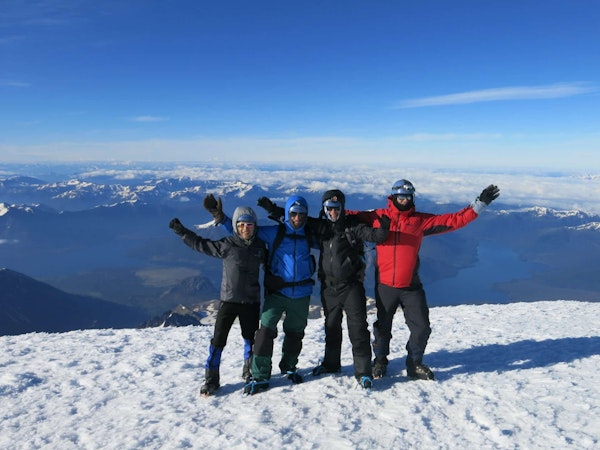
Technical equipment:
Trekking poles
Helmet
Ice axe
Crampons
You will need to carry a 60l / 80l backpack with the following items:
Sleeping bag (-10°C)
Sleeping pad
Extra clothes
Headlight
Bottle of water
Food
Wool cap, gloves, sunglasses, sunblock, lips sunblock.
Group equipment:
Stove
Radio
First aid kit
The National Park policies are quite strict about the equipment. A ranger will check that you are carrying all the necessary items. It is possible to rent some of the equipment.
Other outdoor activities in the area
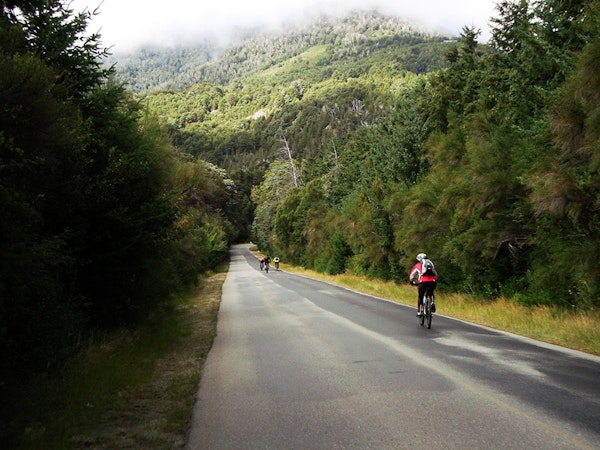
Once you’ve taken some time to relax after your Lanin Volcano ascent, it’s time to explore the area! There’s a lot to do in this Patagonian corner full of forests and pristine lakes. Mountain biking around San Martín de los Andes is a great choice: there are many exciting trails, including the iconic Seven Lakes bike tour.
This region is, of course, an incredible trekking destination, with options ranging from 1-day getaways to several-day hiking traverses.
On the Chilean side, Pucon also boasts great opportunities for outdoor lovers. Rock climbing is very popular around the area, in places like Las Peinetas and Villarrica National Park. Guided treks surrounded by amazing Patagonian landscapes are also a rewarding experience.
***
For many people, Lanin is the first summit of their lives. If you are up for a unique mountaineering experience as well, this Andean volcano may be just what you are looking for. Take a look at all the guided trips promoted at Explore-Share and set out on an incredible journey to this emblematic peak!
